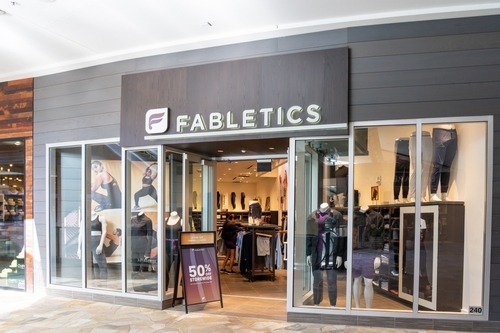 Voice technology and the use of virtual assistants are becoming widespread, changing the way we live and respond to marketing messages. “Alexa, turn the air up.” “Google, what’s the weather tomorrow?” “Siri, set a reminder for 2:30 p.m. to call grandma.” “Alexa, read the latest emails in my inbox…”
Voice technology and the use of virtual assistants are becoming widespread, changing the way we live and respond to marketing messages. “Alexa, turn the air up.” “Google, what’s the weather tomorrow?” “Siri, set a reminder for 2:30 p.m. to call grandma.” “Alexa, read the latest emails in my inbox…”
The shift is expected to be as revolutionary as mobile devices or the Internet, with voice technology taking on one of the most complex data sets, human speech. For the first time, technology is bending to meet us, instead of us having to swipe, type, or touch a computer to make it happen. Experts estimate 20 percent of adults, or 47.3 million people in the U.S., own a Google Home or Amazon Echo. A report from Juniper Research projects that number to grow to 55 percent by 2022 with more smart devices such as toys, vehicles or equipment on the way.
What does all of this mean for email marketing? How do we make email smart? Many email marketing platforms incorporate elements of AI, audio and video. Smart email could probably read itself or be easily read by a device. The email would also be interactive—perhaps it could answer frequently asked questions or with a voice command complete a purchase, pay a bill, gather more information, or connect immediately to a representative.
More on Voice-Activated Tech:
- Is Voice Technology the Next Big Disruptor?
- Google and Target Relese Voice Activated Coupon
- Top Trends in Audio Branding
Clearly, brands that leverage voice-activated technology will differentiate themselves with customers. Brands can either work independently, hoping to fit with each virtual assistant, or design custom apps for each brand. For instance, Capital One has an app for Alexa where customers can check daily spending and account balances, and schedule and pay bills. Uber and Lyft have both created apps where customers can ask Alexa to schedule a ride, tip their driver, and remember specific addresses, such as home or work. Alexa is adding new skills daily, but it has thousands today, and it coordinates with countless other apps and services. Google Home also works with more than 5,000 smart devices and brands to control schedules, thermostats, reminders, entertainment and more.
More Personable Brands
Email is one of the most widely used forms of digital communication, and a favorite among marketers. How could smart email improve a brand’s image? The content should be useful, simple, reliable, and carry a tone that fits with the company’s brand.
In the world of smart emails, companies will be easily recognized by their brand voice. Content will likely be delivered by a standard narrator or brand liaison, one that builds trust with the customer. Messages will be conversational. Conversely, brands with interactions that still feel transactional and technical will lose out to brands that learn how to be more human.
Marketing departments will need to decide if their customers prefer a feminine or masculine voice. Which words should you emphasize? What’s the right tone? You could anticipate large companies hiring voice talent – and audio designers – to make all this work seamlessly, as they tweak campaigns to capitalize on customer preferences.
A smart email should provide a gateway to reach a live person quickly. People need to know the business is readily available. It could also file or delete itself after being read and could offer to change subscription preferences via voice commands or carry out requests such as adding events to calendars.
How Do I Sound?
New technology always brings new issues, and in order to execute voice technology in emails, businesses will need new talent, writers, audio technicians, and engineers to create custom content. For example, how does your brand name sound when it’s pronounced? Is it easy to pronounce? Does the sound of your name fit with your brand?
A recent recording of the word “laurel” went viral when someone asked if others could hear “yanny” instead. And, in fact, about half the population heard a different word entirely. Are people hearing your content correctly? Emails will need to be rigorously screened and given context to account for different audiences, while still being efficient and easy to use.
For this reason, marketers should stick to a single call-to-action and will need to keep important messages in the text. Avoid embedding key messages in images or infographics as screen readers won’t recognize them, and users will miss important information. Instead, keep your important messages in the HTML, where they are easy to find.
Deeper Understanding of Customers
Smart devices collect a lot of data, and smart emails will be no different. Emails that coordinate with virtual assistants or smart devices will collect rich data on user preferences and buying habits; this data can then be used for future marketing.
Google Home users control multiple smart devices such as light fixtures, thermostats, stereos and even garage openers. Users can request individual adjustments or create settings such as the “dinner party” setting that dims the lights, adjusts thermostats and plays an assigned mix of music. Businesses may be able to gauge usage and send emails with maintenance and replacement alerts.
FitBits and similar devices track health and performance data including track routes, speed, calories burned, etc. With access to this real-time data, businesses could later send a personalized email with a summary of how the person performed, plus share buttons for social media and suggestions for other products. FitBit owners who track their sleeping habits could ask voice technology tools like Alexa for a synopsis while eating breakfast or driving to work. FitBit could also send a follow-up email with recommendations on how they could improve their sleep or links to services or products that address sleeping problems.
What’s Next?
So how do businesses make smart email? The central focus of AI, virtual assistants, or smart email is to understand and predict what people want. Businesses are gathering more and more data to try to answer that question. And the more individualized the request, the more difficult the personalization.
Brands will need to focus closely on what the customer is already doing and how their content and communications can make their life better, easier, faster, or more entertaining. Brands will win customers for their creative or novel approaches, but more so because they plan ahead, do their homework and create products that are easy to use and a pleasure to deal with—email that’s so smart, it’s almost human.
Will Devlin is senior director of marketing for MessageGears.



 Network
Network

